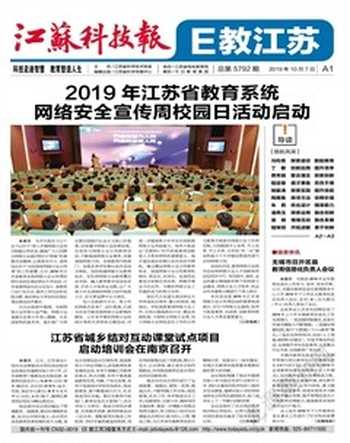【譯題】基礎教育創新驅動力報告
SPOTLIGHTING TWO HURDLES
THE GAP BETWEEN TECHNOLOGY AND PEDAGOGY
This hurdle captures with a new sense of urgency a perennial challenge: tensions that arise when the impulse to adopt new technologies takes precedence over preparedness to use them effectively. This challenge encompasses cultural, leadership, pedagogical, curricular and procedural issues. Continuing advances in technology create disconnects between the needs of students and the skill sets of teachers. Technology can accelerate teaching practices—good or bad—and necessitate instructional shifts to effectively support improved student learning.
1.Exploring the Challenge
The gap between technology and pedagogy is multifaceted—and it begins before technology gets to the classroom. From purchasing decisions to planning and implementation, schools sometimes prioritize technology over pedagogy, products over people and potential over reality. The challenge starts at the top, where school system leadership, technology or curriculum departments tend to be the power centers of technology decisions.
School systems can build their capacity to innovate by operating as innovation labs—innovating at a small scale, evaluating the impact with applied research and scaling only after matching 21st century pedagogical methods to the piloted technology.
The pursuit of the “next new thing” in technology can take precedence over teaching and learning. That’s backwards. Defining the knowledge and skills students need to succeed in a digital world, establishing a shared vision of curricular and pedagogical approaches, and developing a strategic plan should precede and then inform technology decisions that prioritize educational value.
2.Imagining the Potential
The gap between technology and pedagogy results in wasted spending, frustrated educators and lost opportunities for students to develop new curiosities and skills for the digital age.
What if we could bridge this gap? Schools could realize higher returns on technology investments with results that matter in education—sound pedagogical practices and opportunities for students to engage in high-value, forward-thinking learning activities. For example, mixed and virtual reality can enhance experiential learning with opportunities to explore and act within and beyond the physical world. With foresight and preparation, educators can move students from passive to active learners who take charge of their own learning, collaborate, participate, inquire, discover, reason and create.
3.Surmounting the Challenge
This hurdle is surmountable. What will it take? Professional development, professional development, professional development. No technology will have the desired impact without professional learning and growth.
But there’s more to it. Education leaders like superintendents, chief technology officers and chief information officers need to understand teacher needs and invite educators to the table for strategic planning. Being part of these conversations can be another aspect of professional development, as educators learn what it means to select and implement technology—and ask questions about costs, support, scalability and sustainability. School systems and schools also might consider an investment in piloting new technologies and sharing the results within a network of schools. Educators also could ask for a seat at the table and work with technology companies to inform research and development of products that truly support effective pedagogy.
4.Additional Resources
The Advisory Board offered other advice:
●Evaluate how technology can contribute to your vision, mission and goals.
●Develop a strategic plan that aligns technology with learning expectations and pedagogy.
●Avoid the “shiny object syndrome” in purchasing technology by bringing cross-cutting expertise, including teachers, to the table.
●Budget for professional development with every technology purchase.
●Champion technology with strong leadership in schools.
●Encourage professional learning communities (PLCs).
●Monitor the effectiveness of technology and make course corrections, if needed.
●Scale and sustain effective technology with an intentional system of multiple, reinforcing, aligned connections to the curriculum, professional development, leadership, assessment and parent engagement.
譯文
聚焦兩大核心挑戰
挑戰一:教育理論與技術實踐的差距
這一挑戰帶來了一種新的緊迫感,它是一項長期挑戰:當人們采用新技術的沖動優先于做好有效使用新技術的準備時,緊迫感隨之產生。這一挑戰包括文化、領導力、教育學、課程和程序等問題。技術的不斷進步使學生的需求與教師的技能脫節。技術可以加速好的或壞的教學實踐,并且需要教學轉變以有效地支持改善學生的學習。
1.探索挑戰
技術與教育理論之間的差距是多方面的,這種差距在技術進入課堂之前就開始了。從購買決策到規劃和實施,學校有時將技術優先于教學法,產品優先于人,潛力優先于現實。挑戰一般始于頂層,學校區域領導、技術或課程部門往往是技術決策的權力中心。
各地區學校可以開辦創新實驗室來提升創新能力。只有在將21世紀的教學方法與試點技術相匹配后,通過像創新實驗室這樣的小規模創新,才能評估應用研究和擴展的影響。
一味地追求“新技術”,而不考慮教學和學習,這是一種倒退。學校應先制訂戰略計劃,明確學生在數字世界中取得成功所需的知識和技能,建立課程和教學方法的共同愿景,優先考慮有教育價值的技術決策。
2.激發潛能
技術與教育理論之間的差距,導致教育開支的浪費,使得教育工作者受挫,也讓學生失去了為數字時代發展好奇心和新技能的機會。
如果我們能夠彌合這一差距,學校可以實現更高的技術投資回報,其結果對教育至關重要——健全的教學實踐和高價值、有前瞻性思維學習活動的學生參與機會。例如,混合和虛擬現實可以增強體驗式學習,學生有機會在物理世界內外進行探索和活動。通過對混合和虛擬現實技術的遠見和準備,教育工作者將學生從被動學習者轉變為主動學習者,他們自己負責學習、協作、參與、探究、發現、推理和創造。
3.克服挑戰
這個挑戰是可以克服的。怎么去克服呢?答案是緊抓專業發展。沒有專業的學習和成長,任何技術都不會產生預期的影響。
但除此之外,還有更多因素需要考慮:像主管、首席技術官和首席信息官等教育領導者需要了解教師的需求,并邀請教育工作者參與戰略規劃;參與對話是專業發展的另一個方面,因為教育工作者需要學會如何選擇和實施技術,并詢問有關成本、支持、可擴展性和可持續性等問題。學校系統和任一學校也可考慮投資試用新技術并在學校網絡內分享結果。教育工作者也可以要求獲得席位,并與技術公司合作,為真正支持有效教學產品的研究和開發提供信息。
4.拓展資源
國際咨詢委員會提出了其他建議:
●評估技術如何助力實現愿景、使命和目標。
●制訂戰略計劃,力爭技術與學習期望和教學方法保持一致。
●在討論時引入包括教師在內的跨領域專業人才,避免購買技術中的“新奇事物綜合征”。
●為教師專業發展的技術購買制訂預算方案。
●學校要給予領先性技術強有力的支持。
●鼓勵建立專業學習共同體(PLCs)。
●必要時,要監控技術的有效性,并及時修改課程。
●通過將多重強化意向系統與課程、專業發展、領導、評估和家長參與相結合的方式,來維持和推廣有效的技術。

